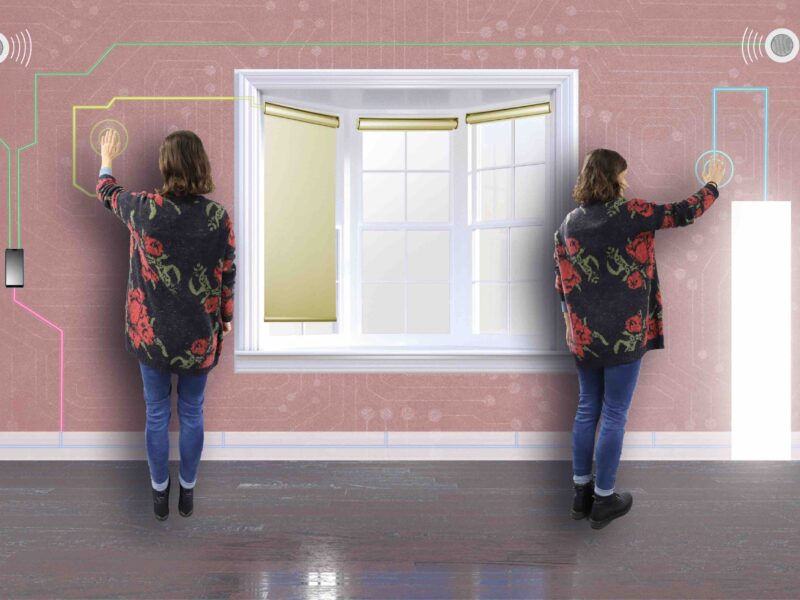
Intelligent textiles transmit data in the Smart Home
Thanks to the Internet of Things, residential objects can now be interconnected in such a way that they make our everyday lives easier in many ways. In general, however, private households lack comprehensive low-voltage and communication connections in order to install IoT devices such as temperature sensors, microphones or light signals at any desired location.
In order to supply the systems with electricity, ecologically questionable and failure-prone batteries or unattractive power cables are used today. In addition, the devices require energy-intensive and interference-prone radio technologies for communication with each other. The joint project ConText, which has now been launched, aims at a flexible, user-oriented and intuitive solution that can be installed easily and without great effort in the living area.
To this end, partners from industry and research are developing an IoT infrastructure of smart wallpapers, carpets and textile surfaces, so-called Connecting Textiles, under the coordination of the German AI research institute DFKI with its research areas Cyber-Physical Systems and Interactive Textiles. IoT devices can not only be supplied with low power via these surfaces based on wires, but can also communicate with each other via standardized smart home protocols. The devices can be attached to the Connecting Textiles by the users themselves according to their individual requirements, e.g. by simple gluing, stapling or plugging. In addition, electronic textiles enable new, intuitive interaction possibilities, e.g. haptic interaction patterns such as pressing or painting, which can be used to control and configure the devices.
The research focus of the DFKI research area Cyber-Physical Systems under Dr. Rolf Drechsler lies in the fields of software and hardware design, verification of electronic systems and information security. Accordingly, the DFKI scientists in ConText are responsible for providing a secure communication infrastructure for electronic textiles that enables robust and reliable communication between smart home centres and IoT components. In the context of the project, data integrity and state-of-the-art encryption play a paramount role. The developed infrastructure should be open for different Smart Home protocols and support the simple connection of any IoT device.
In addition, the researchers in the project are developing software that uses artificial intelligence to recognize basic patterns of gesture interactions on textile surfaces and thus enables intuitive control and configuration of smart home devices. Residents will also be able to define their own control gestures and interaction sequences.
The DFKI research area Interactive Textiles, headed by Prof. Dr. Gesche Joost, contributes its expertise in the design of product service systems in the field of electronic textiles using participative methods to the project. In ConText, the scientists develop a haptic interaction surface for which they identify suitable intuitive gesture interactions in user workshops and explore possibilities for their integration into smart home devices. Based on the needs of the users, they also develop modular plug-and-play solutions for IoT components that allow the systems to be connected to the textile surfaces without special expertise.
© Photo: DFKI, Annemarie Popp
Related aricles:
Sensor suit to protect worker’s spine
Always-on-sensing: don’t waste power in digits
Industry consortium develops “tactile” Internet
 If you enjoyed this article, you will like the following ones: don't miss them by subscribing to :
eeNews on Google News
If you enjoyed this article, you will like the following ones: don't miss them by subscribing to :
eeNews on Google News


